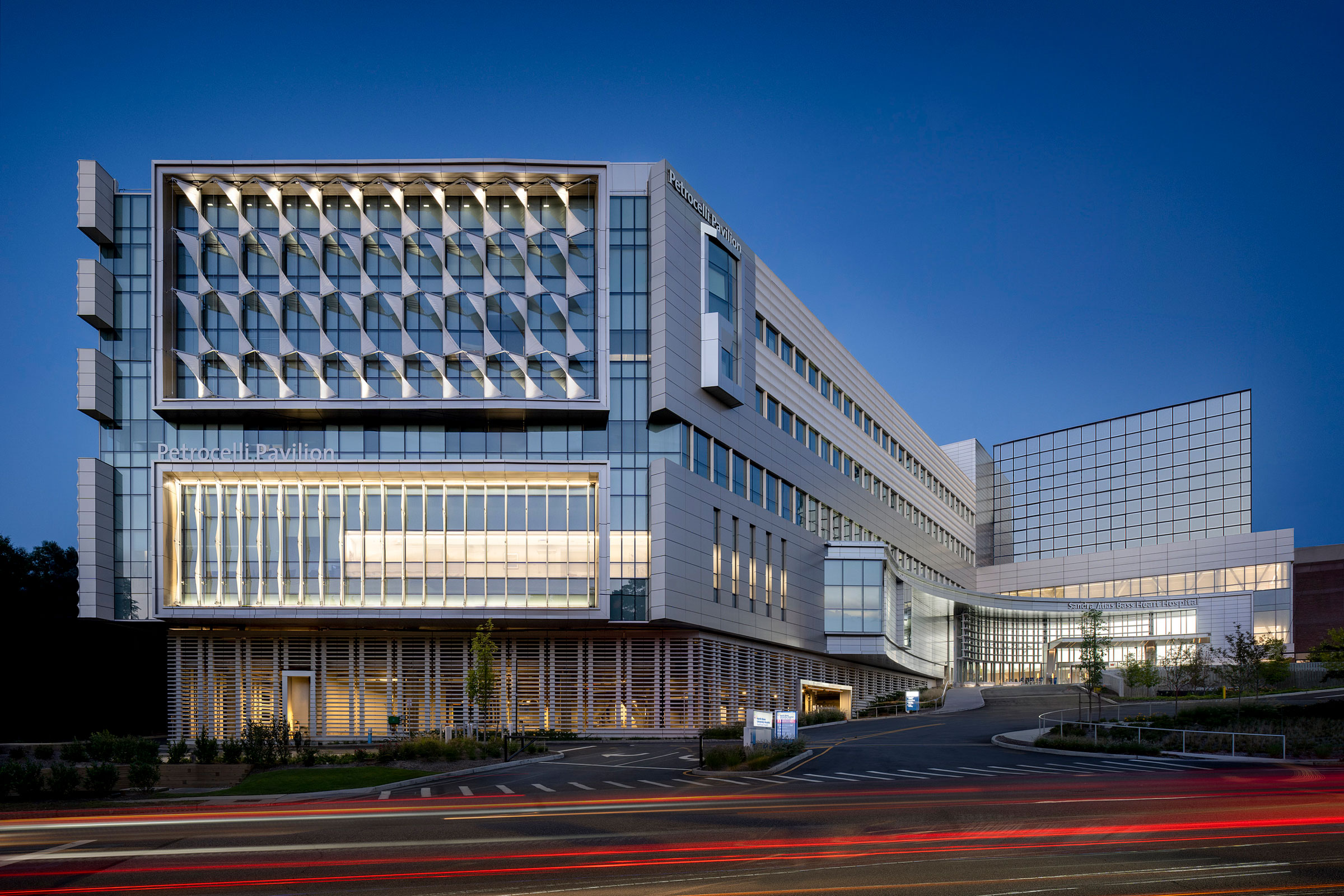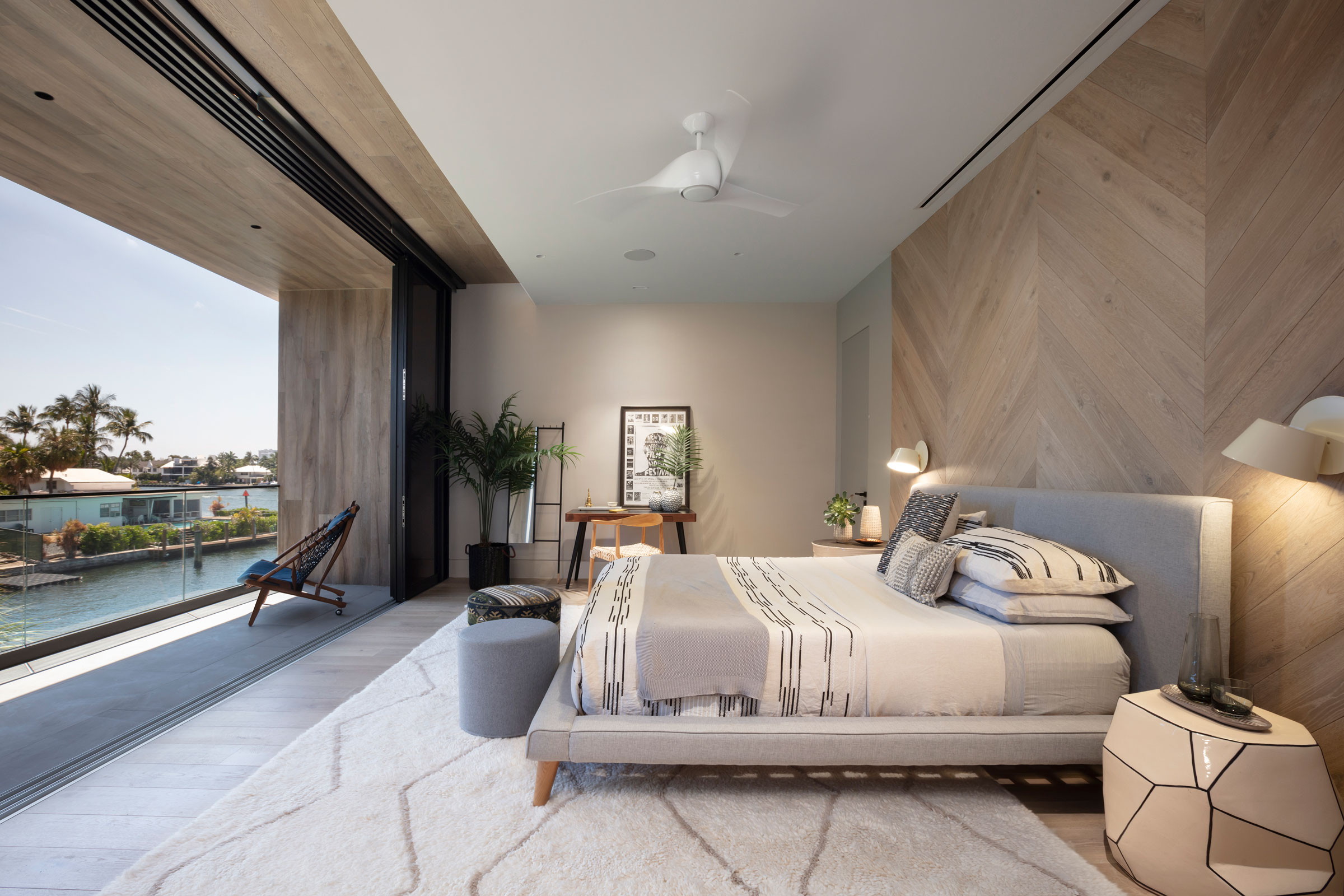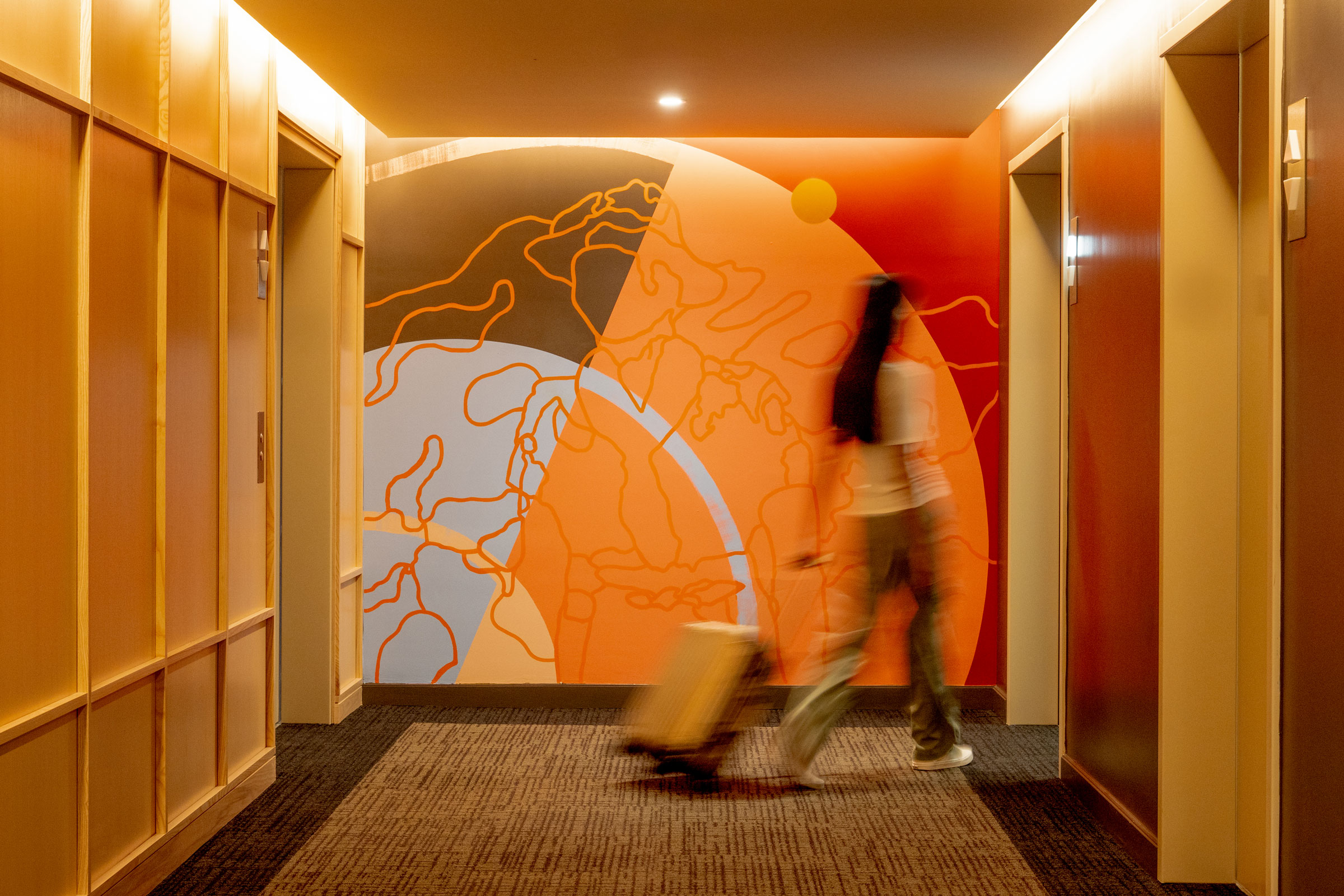Story at a glance:
- The new Petrocelli Surgical Pavilion was designed with different types of people in mind.
- Natural materials were introduced more in public areas to bring in warmth.
The design of a new 280,000-square-foot surgical pavilion aims to consider everyone. “The shifts in our practice have been about this notion of experience—mapping what the different personas are feeling as they come into a space and how to accommodate them. We talk about all the different factors and stresses anyone coming into a health care environment may be feeling,” says CannonDesign’s Dale Greenwald, who oversaw the interior design of the new Petrocelli Surgical Pavilion.
The addition to Northwell Health’s flagship North Shore University Hospital (NSUH) campus on Long Island has 18 operating rooms, including three hybrid ORs and 132 ICU rooms. As with many hospital campuses, there were many moving parts. “It was with a series of different buildings and additions. We were asked to fill in a portion of the site that faces Community Drive and to make a new front door at that end of the campus, which would be for the Sandra Atlas Bass Heart Hospital,” says CannonDesign’s John Reed, a lead architect on the project.
The design team sought to blend the materiality and scale of the existing NSUH complex and create an open and inviting facility to make the patient and caregiver experience as comfortable as possible. The patient journey starts at a sheltered entry court that leads to a light-filled lobby. The double-height lobby is framed by a luminous glass bridge that connects the new operating room suites and the first of the ICU floors with the existing surgical suite and hospital. “It’s a big footprint to do those sorts of things and have it connect back to the hospital in a seamless way while adding three floors of ICU rooms,” Reed says.
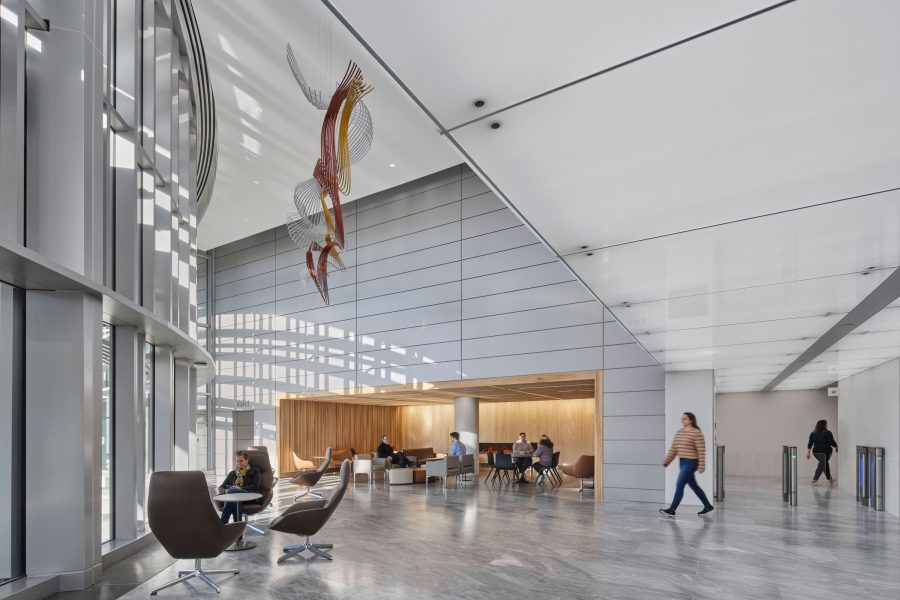
Natural materials were introduced more in public areas, Greenwald says, including the natural stone in the lobby that brings in warmth. “There’s also this wood wrapping element that shields the families from the direct view to the elevator and at the same time creates an enveloping space with different kinds of seating to accommodate activities or people who come in who are visiting their families but are also trying to accommodate work at the same time while they’re there.” Photo by Laura Peters, courtesy of CannonDesign
The project began just before Covid, and Northwell made the decision to continue building at the height of the pandemic. “Where some floors were going to be shells, they decided to fill them all in with ICU rooms,” Reed says. “There was some interesting gymnastics we went through to get all of it to fit together.” For example, the surgical suites have a mezzanine floor above them, so maintenance can drop down in each room to work and get back out while the rest of the floor remains in operation. “It’s a commitment to an approach you don’t see very often in health care,” Reed says.
Designed for Different Needs
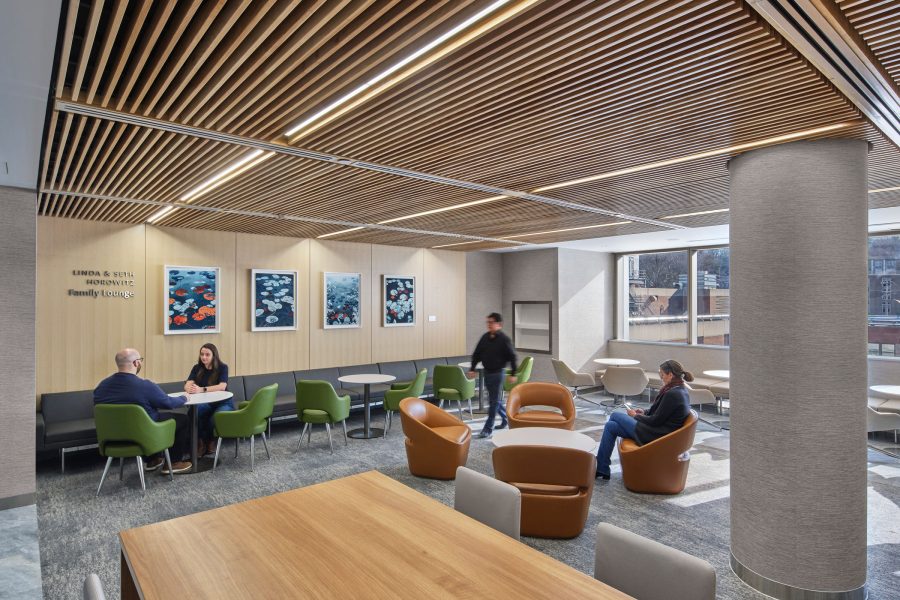
Natural light and warm wood looks bring warmth to the Petrocelli Surgical Pavilion public spaces. Photo by Laura Peters, courtesy of CannonDesign
There’s a growing emphasis in health care design to create experiences unique to the varied populations served, Greenwald says. “You’ve got patients, visitors, and staff all coming into an environment under different moments of stress or anxiety. For a long time we approached health care as a hospitality environment. It’s not a hospitality environment. It’s a clinical care environment. There are a lot of factors that come into how we develop those spaces to make them comfortable but to also make them respond to clinical needs and not be overly decorative.”
There are a lot of factors that come into how we develop those spaces to make them comfortable but to also make them respond to clinical needs and not be overly decorative.
Spaces must function well in times of great need, and they must be durable, efficient, cleanable, and operational 24 hours a day, 365 days a year, he says. Caregiver spaces are also getting more attention. “Caregivers are wonderful people who contribute to the outcomes of patients, and there are a lot of stresses,” Greenwald says. “Their care and their well-being is really important—that they can have a place where they can get out for a moment to compose themselves.”
On the surgical floor, more design is centered around not just creating a clean corridor, but also providing places where staff can gather, collaborate, or simply pause to make a call or take a breather. “Those respite spaces are the kinds of spaces that are now being incorporated that were more ad hoc in the past,” Greenwald says.
Control & Confidence
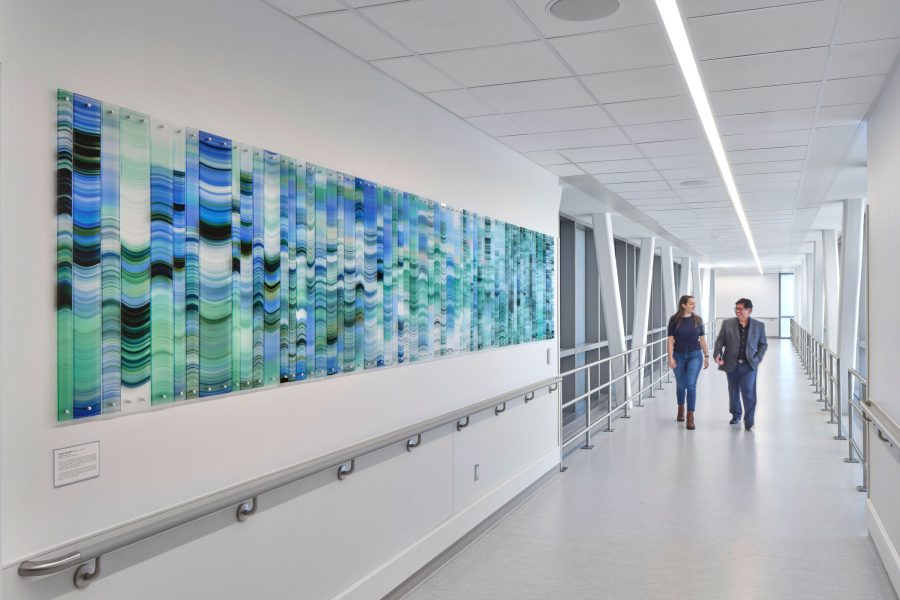
A connector bridge connects the surgical suites to the ICU. “It forms a canopy over the reception desk, but it’s really critical to the operation of the surgical suite above,” Greenwald says. It also forms a backdrop for the art and for the full glazing of the facade of the building of the entry. Photo by Laura Peters, courtesy of CannonDesign
Giving patients a feeling of control is also crucial, Greenwald says, with more access being given to lighting, shading, temperature, and entertainment in a patient’s room. “It’s important to have these controls so people don’t feel helpless. They need to feel they’re able to have some control over their environment.”
There’s also the idea of being seen. At times a patient may want privacy, while at other times they want to know someone can see them. That’s where innovative door solutions can come in. “You want to know there are people out there who are looking in on you, but at the same time you want to have a sense of privacy and dignity. It’s a balancing act to pull these things together in ways that satisfy the institutions we work for.”
Some doors incorporate electric smart glass, film, or blind systems. Depending on the nature of the room, more visibility is necessary. “When we start our projects we’re very cognizant of that, and we model sight lines to see who can see what from where,” Greenwald says.
The CannonDesign team thinks a lot about the patients themselves, too. “People experience a space lying on their backs in a bed or on a gurney, so how lighting works in a health care environment is very different. We look at lighting for both wayfinding and helping the visitors move around the space, but we also look at lighting and ask, ‘What do people see when they’re looking up at the ceiling?’ You’re looking at a ceiling in a bed a lot,” Greenwald says. “We’ve been doing a lot more studies in 3D looking at things like what the patient sees from the bed as opposed to what the room is like at the point of entry.”

